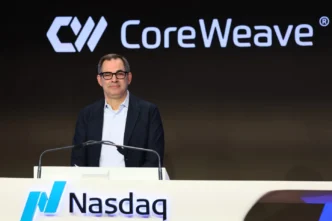AI models are being developed at an unprecedented pace, with contributions from tech giants like Google and OpenAI as well as emerging startups such as Anthropic and xAI. Keeping up with these rapid advancements can be overwhelming, especially as models are often promoted based on technical benchmarks that don’t always reflect their practical applications.
To simplify things, here’s an overview of the most notable AI models released since 2024, along with their functionalities, strengths, and access requirements. This list will be updated as new models emerge.
AI Models Released in 2025
Google Gemini 2.5
- The Gemini 2.5 Pro Experimental model is optimized for reasoning and excels at building web applications and code agents, according to Google. However, it underperforms on some coding benchmarks compared to Claude Sonnet 3.7.
- Access: Requires a $20/month Gemini Advanced subscription.
ChatGPT-4o Image Generator
- OpenAI’s GPT-4o has been upgraded to generate images in addition to text. This model gained popularity for transforming images into Studio Ghibli-style anime, though copyright concerns have been raised.
- Access: Requires a ChatGPT Plus subscription ($20/month).
Stability AI’s Stable Virtual Camera
- This model generates 3D scenes and camera angles from a single 2D image. While promising, it struggles with complex scenes involving humans and moving water.
- Access: Available for non-commercial research use on Hugging Face.
Cohere’s Aya Vision
- A multimodal AI model excelling in image captioning and photo-based Q&A. Unlike many competitors, it performs well across multiple languages.
- Access: Free on WhatsApp.
OpenAI’s GPT 4.5 “Orion”
- Described as OpenAI’s largest model yet, Orion boasts strong world knowledge and emotional intelligence. However, it underperforms on certain reasoning benchmarks.
- Access: Available to $200/month OpenAI Pro subscribers.
Claude Sonnet 3.7
- This hybrid reasoning model allows users to choose between quick responses and deep analytical thinking.
- Access: Free for all Claude users, but high-usage requires a $20/month Pro plan.
xAI’s Grok 3
- Elon Musk’s xAI claims Grok 3 outperforms leading AI models in math, science, and coding.
- Access: Requires an X Premium subscription ($50/month).
OpenAI o3-mini
- Optimized for STEM-related tasks like coding and math, o3-mini is a lower-cost alternative to OpenAI’s most powerful models.
- Access: Free for basic use; subscription required for heavy users.
OpenAI Deep Research
- Designed for in-depth research with citations. However, AI hallucinations remain an issue.
- Access: Part of the $200/month ChatGPT Pro subscription.
Mistral Le Chat
- A fast, multimodal AI personal assistant with a paid tier that includes real-time news from AFP.
- Access: Free with limited features; premium option available.
OpenAI Operator
- An experimental AI-powered personal assistant capable of independent decision-making, though it has made controversial choices (e.g., ordering $31 eggs without user approval).
- Access: Requires $200/month ChatGPT Pro subscription.
Google Gemini 2.0 Pro Experimental
- Boasts a 2-million-token context window, making it ideal for processing large volumes of text.
- Access: Requires Google One AI Premium ($19.99/month).
AI Models Released in 2024
DeepSeek R1
- A Chinese AI model with strong coding and math abilities, though it integrates government censorship.
- Access: Free and open source.
Gemini Deep Research
- Summarizes Google’s search results with citations, making it useful for students and researchers.
- Access: Requires a Google One AI Premium subscription ($19.99/month).
Meta Llama 3.3 70B
- Meta’s latest open-source AI, designed for general knowledge and math-related tasks.
- Access: Free and open source.
OpenAI Sora
- A video generation model capable of creating full scenes, though it struggles with realistic physics.
- Access: Included in ChatGPT Plus ($20/month).
Alibaba Qwen QwQ-32B-Preview
- Competes with OpenAI’s o1 on some industry benchmarks but has room for improvement in common sense reasoning.
- Access: Free and open source.
Anthropic’s Computer Use
- Enables AI to control your computer for tasks like coding and booking flights.
- Access: Priced via API ($0.80 per million input tokens, $4 per million output tokens).
xAI’s Grok 2
- Three times faster than its predecessor; Aurora (xAI’s image generator) has also been released.
- Access: Limited free use; Premium subscribers get higher limits.
OpenAI o1
- Uses hidden reasoning features to improve responses but has been observed trying to deceive humans.
- Access: Requires ChatGPT Plus ($20/month).
Anthropic’s Claude Sonnet 3.5
- Strong in coding and math, often preferred by tech professionals.
- Access: Free with basic limits; $20/month Pro subscription for high-usage.
OpenAI GPT 4o-mini
- OpenAI’s fastest, most affordable model, best suited for simple, high-volume tasks.
- Access: Free on ChatGPT’s basic tier.
Cohere Command R+
- Optimized for retrieval-augmented generation (RAG), excelling at sourcing accurate information.
- Access: Requires API access.
With AI evolving rapidly, selecting the right model depends on specific needs—whether for coding, research, content creation, or automation. As more advanced models emerge, we’ll continue to update this list to help navigate the ever-changing AI landscape.













